-
-
Tel:
+86-13564279317
+86-21-66278766 
Hello, welcome to the official website of Sidu international trade (Shanghai) Co., Ltd!
Home | Contact Us | 中文版Tel:
+86-13564279317
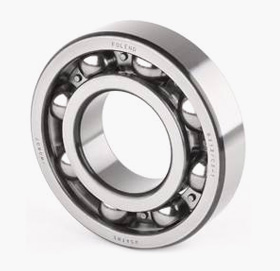
Deep groove ball bearing is the most common type of rolling bearing. The basic deep groove ball bearing consists of an outer ring, an inner ring, a set of steel balls and a set of cages. There are two types of deep groove ball bearings: single row and double row. The deep groove ball structure is also divided into two types: sealed and open. The open type means that the bearing does not have a sealed structure. The sealed deep groove ball is divided into dust-proof seal and oil-proof. seal. The material of the dust-proof sealing cover is stamped steel plate, which only serves to prevent dust from entering the bearing raceway. The oil-proof type is a contact oil seal, which can effectively prevent the grease in the bearing from overflowing. Single row deep groove ball bearing type code is 6, double row deep groove ball bearing code is 4. It has a simple structure and is easy to use, and is the most commonly produced and widely used type of bearing.
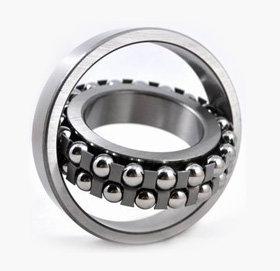
A bearing with spherical balls is assembled between the inner ring of the self-aligning ball bearing and the outer ring of which the raceway is spherical. The center of curvature of the outer ring raceway surface is the same as the center of the bearing, so it has the same self-aligning function as the self-aligning ball bearing. When the shaft and housing are deflected, they can be adjusted automatically without increasing the bearing burden. Spherical roller bearings can withstand radial loads and axial loads in two directions. Large radial load capacity, suitable for heavy loads and shock loads. The inner diameter of the inner ring is a bearing with a tapered bore, which can be directly mounted. Or install it on the cylindrical shaft using an adapter sleeve and a dismantling sleeve. The cages use steel stamping cages, polyamide forming cages and copper alloy turning cages. The self-aligning ball bearing has two structures of cylindrical hole and conical hole, and the material of the cage is steel plate, synthetic resin, etc. Its characteristic is that the outer ring raceway is spherical, with automatic centering, which can compensate for the errors caused by non-concentricity and shaft deflection, but the relative inclination of the inner and outer rings should not exceed 3 degrees. [1] It can bear a large radial load, and can also bear a certain axial load. The outer ring raceway of this type of bearing is spherical, so it has self-aligning performance. When the shaft is bent or inclined under force, so that the relative inclination of the center line of the inner ring and the center line of the outer ring does not exceed 1°~2.5°, the bearing can still work. . The inner hole of self-aligning ball bearing has two types: cylindrical and conical. The taper of the conical bore is 1:1 2 or 1:30. In order to enhance the lubricating performance of the bearing, an annular oil groove and three oil holes are machined on the outer ring of the bearing.

Angular contact ball bearings can bear both radial and axial loads. Can work at higher speeds. The larger the contact angle, the higher the axial load carrying capacity. High-precision and high-speed bearings typically have a 15-degree contact angle. Under the action of axial force, the contact angle will increase. Single row angular contact ball bearings can only bear axial load in one direction, and will cause additional axial force when bearing radial load. And can only limit the axial displacement of the shaft or housing in one direction. Angular contact ball bearings have a contact angle of 40 degrees, so they can withstand large axial loads. Angular contact ball bearings are of non-separable design, with shoulders at different heights on both sides of the inner and outer rings. To increase the load capacity of the bearing, one of the shoulders is machined lower, allowing the bearing to fit more balls. Double row angular contact ball bearings can withstand larger radial loads, mainly radial and axial combined loads and moment loads, and limit the axial displacement of the shaft on both sides. The inclination between the inner and outer rings of the double row angular contact ball bearing is limited in the components that are mainly used to limit the bidirectional axial displacement of the shaft and the housing. The forces and moments on the bearing, and the maximum allowable inclination angle should ensure that excessive additional stress is not generated in the bearing. If there is an inclination angle between the inner and outer rings of the bearing, the service life of the bearing will be affected, the running accuracy of the bearing will be reduced, and the running noise will increase. Double row angular contact ball bearings generally use nylon cages or brass solid cages. When installing the double row angular contact ball bearing, it should be noted that although the bearing can bear bidirectional axial load, if there is a gap for the ball on one side, care should be taken not to let the main axial load pass through the groove on the side with the gap. When the bearing is used, care should be taken to make the side raceway without the ball-loading notch bear the main load.
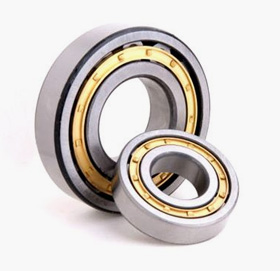
Cylindrical rollers and raceways are linear contact bearings. Load capacity, mainly bear radial load. The friction between the rolling element and the rib of the ring is small, which is suitable for high-speed rotation. According to whether the ring has ribs or not, it can be divided into single row cylindrical roller bearings such as NU, NJ, NUP, N, NF, and double row cylindrical roller bearings such as NNU and NN. The bearing is a structure in which the inner ring and the outer ring can be separated. Cylindrical roller bearings without ribs on the inner or outer ring, the inner and outer rings can move relative to the axial direction, so they can be used as free end bearings. Cylindrical roller bearings with double ribs on one side of the inner ring and outer ring and a single rib on the other side of the ring can withstand a certain degree of axial load in one direction. Generally, a steel stamping cage is used, or a copper alloy turning solid cage is used. However, there are also part of the use of polyamide forming cage.
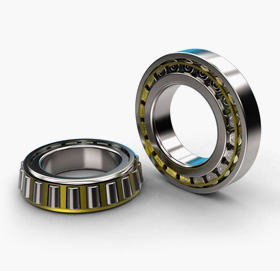
Tapered roller bearings are separable bearings, and both the inner and outer rings of the bearing have tapered raceways. This type of bearing is divided into different structural types such as single-row, double-row and four-row tapered roller bearings according to the number of rows of rollers installed. Single row tapered roller bearings can withstand radial loads and axial loads in one direction. When the bearing is subjected to radial load, an axial component force will be generated, so when another bearing that can withstand the opposite direction axial force is needed to balance it. The ability of a single row tapered roller bearing to withstand axial loads depends on the contact angle, that is, the angle of the outer ring raceway. The larger the angle, the greater the axial load capacity. The most used tapered roller bearings are single row tapered roller bearings. In the front wheel hub of the car, a small-sized double-row tapered roller bearing is used. Four-row tapered roller bearings are used in heavy-duty machines such as large cold and hot rolling mills.
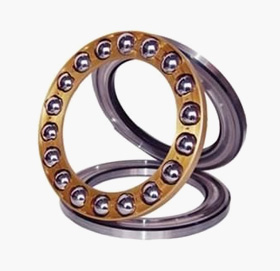
Thrust ball bearings are designed to withstand thrust loads during high-speed operation, and consist of a washer-like ferrule with a ball-rolling raceway groove. Since the ferrule is in the shape of a seat cushion, the thrust ball bearing is divided into two types: the flat base cushion type and the adjustable thrust ball bearing hheey spherical seat cushion type. In addition, this bearing can withstand axial loads, but not radial loads.
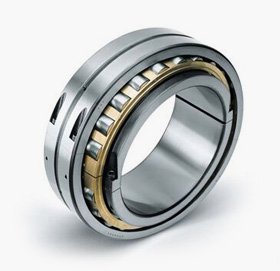
Spherical roller bearings have two rows of rollers, which mainly bear radial loads, and can also bear axial loads in either direction. It has high radial load capacity, especially suitable for working under heavy load or vibration load, but cannot bear pure axial load. The outer ring raceway of this type of bearing is spherical, so its self-aligning performance is good, and it can compensate for the coaxiality error. There are two rows of symmetrical spherical rollers, the outer ring has a common spherical raceway, and the inner ring has two raceways inclined at an angle to the bearing axis, which has good self-aligning performance. The bearing can still be used normally, and the centering performance varies with the bearing size series. Generally, the allowable centering angle is 1~2.5 degrees. The load capacity of this type of bearing is large, and the bearing can withstand radial load in addition to radial load The axial load acting in both directions has good impact resistance. Generally speaking, the allowable working speed of spherical roller bearings is low.
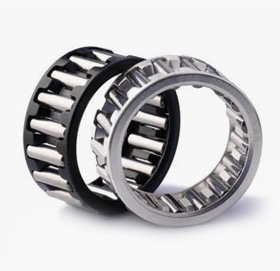
Needle roller bearings are roller bearings with cylindrical rollers, which are thin and long relative to their diameter. Such rollers are called needle rollers. Despite having a smaller section, the bearing still has a high load bearing capacity. Needle roller bearings are equipped with thin and long rollers (roller diameter D≤5mm, L/D≥2.5, L is the length of the roller), so The radial structure is compact, and when its inner diameter and load capacity are the same as other types of bearings, the outer diameter is the smallest, especially suitable for bearing results with limited radial installation size. Depending on the application, a bearing without an inner ring or a needle roller and cage assembly can be selected. At this time, the surface of the journal and the surface of the housing hole matched with the bearing are directly used as the inner and outer rolling surfaces of the bearing. In order to ensure the load capacity and running performance As with the bearing with ring, the hardness, machining accuracy and surface quality of the raceway surface of the shaft or housing hole should be similar to the raceway of the bearing ring. This type of bearing can only bear radial loads.
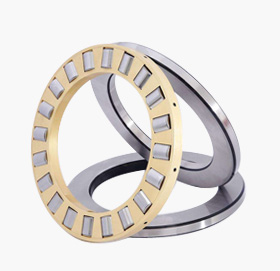
Thrust roller bearings are used to bear the combined axial and radial loads with the main axial load, but the radial load shall not exceed 55% of the axial load. Compared with other thrust roller bearings, this bearing has a lower friction factor, higher rotational speed, and has self-aligning performance
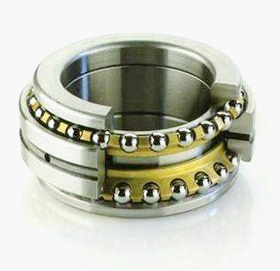
The characteristic of thrust angular contact ball bearing is that it can bear the combined load of radial and axial load at the same time, and limit the axial displacement of the two sides of the shaft. It is composed of outer ring, inner ring, steel ball and cage, which can work stably at high speed. When installing, it should be noted that although the bearing can bear bidirectional axial load, if there is a gap for ball loading on one side, care should be taken not to let the main axial load pass through the groove on the side with the gap.

The electrical insulating bearing adopts a special spraying process, and the outer surface of the bearing is sprayed with a high-quality coating. The coating has strong bonding force with the substrate and good insulation performance. And the damage caused by the rolling elements and raceways, and improve the service life of the bearing. The process is constantly being improved. In insulated bearings, there is a 100μm thick coating on the outer or inner ring surface, which can withstand voltages up to 1000 V DC. A special spraying process can form a coating of uniform thickness and strong adhesion, which is further processed to make it impervious to moisture and humidity. Electrically insulating bearings can avoid damage caused by electrical corrosion, so Compared with ordinary bearings, it can be used in motors to ensure more reliable operation. It is more cost-effective and reliable than other insulation methods, such as shaft or housing insulation. The dimensions and basic technical characteristics of insulated bearings are the same as those of non-insulated bearings, so they are 100% interchangeable.
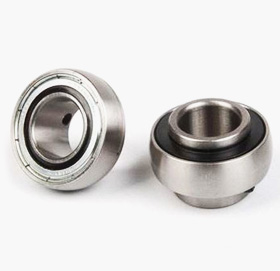
Outer spherical ball bearing is actually a variant of deep groove ball bearing, which is characterized in that the outer diameter surface of its outer ring is spherical, which can be fitted into the corresponding concave spherical surface of the bearing seat to play the role of self-aligning. Although its basic performance should be similar to that of deep groove ball bearings, because these bearings are mostly used in relatively rough machinery, the installation and positioning are not accurate enough, the axis alignment between the shaft and the seat hole is poor, or the shaft is long and deflected. In the case of large and other, and the bearing itself is not high enough precision, and some structures are relatively rough, so the actual performance of the deep groove ball bearing of the same specification should be marked with a considerable discount. For example: the outer spherical ball bearing with top wire is used in the through shaft with large stiffness difference and large deflection. This kind of bearing has sealing rings on both sides, which can strictly prevent the intrusion of dirt. It has been filled with an appropriate amount of lubricant before leaving the factory, and it does not need to be cleaned before installation. , No need to add lubricant, when the top screw on the protruding end of the bearing inner ring is fastened on the shaft. The allowable axial load shall not exceed 20% of the rated dynamic load. Insert spherical bearings are preferably used in applications requiring simple equipment and components, such as agricultural machinery, transportation systems or construction machinery. It is mainly used to bear the combined radial and axial load mainly based on radial load. Generally, it is not suitable to bear the axial load alone. This kind of bearing can be installed with the inner ring (with a full set of rollers and cages) and the outer ring respectively. This kind of bearing does not allow the shaft to be inclined relative to the housing, and additional axial force will be generated under the radial load. The size of the axial clearance of this kind of bearing has a great relationship with whether the bearing can work normally. When the axial clearance is too small, the temperature rise will be high; when the axial clearance is large, the bearing is easily damaged. Therefore, special attention should be paid to adjusting the axial clearance of the bearing during installation and operation. If necessary, pre-interference installation can be performed to increase the rigidity of the bearing.
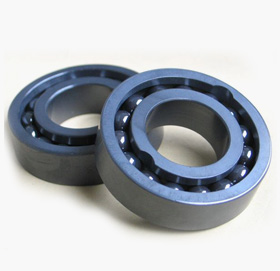
High temperature bearing: The first and most important thing is to withstand high temperature. There are many kinds of high temperature resistant bearings. According to different needs and different environments, different types of bearings can be installed. Category High temperature bearing can be divided into: ordinary structure high temperature bearing and special structure high temperature bearing. Use environment High temperature bearings are widely used in metallurgy, kiln, glass, blast furnace, painting equipment and other high temperature operation machinery. High temperature resistant ordinary type Ordinary structure high temperature resistant bearing: mainly refers to the bearing designed according to the common bearing structure, using high temperature resistant materials such as high temperature resistant bearing steel, etc., mainly including high temperature resistant self-aligning ball bearings, high temperature resistant deep groove balls and other bearings. Imported high temperature resistant bearings can not only work under high temperature and high pressure, but also bear the corrosion caused by high temperature; they also need to have the characteristics of non-magnetic conductivity, wear resistance, long life and high reliability. In addition, imported high temperature resistant bearings are also required to operate under special working conditions such as shock, vibration, tilt, swing, etc. with the drive mechanism, and the working environment and conditions of imported high temperature resistant bearings are quite demanding
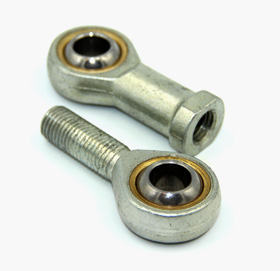
The spherical plain bearing is mainly a sliding bearing with a special structure of an inner ring with an outer spherical surface and an outer ring with an inner spherical surface. Can withstand larger loads. The structure of the spherical plain bearing is simpler than that of the rolling bearing, which is mainly composed of an inner ring with an outer spherical surface and an outer ring with an inner spherical surface. Joint bearings are generally used for low-speed swinging motion (ie angular motion). Since the sliding surface is spherical, it can also perform tilting motion (ie self-aligning motion) within a certain angle range. When the degree is large, it can still work normally. Spherical bearings can withstand large loads. According to its different types and structures, it can bear radial load, axial load or combined radial and axial load at the same time. Since the outer spherical surface of the inner ring is inlaid with composite materials, the bearing can produce self-lubrication during operation. It is generally used for low-speed swing motion and low-speed rotation. It can also be used for tilting motion within a certain angle range. When the misalignment between the support shaft and the shaft housing hole is large, it can still work normally. Self-lubricating spherical plain bearings are used in water conservancy, professional machinery and other industries. Spherical bearings are widely used in engineering hydraulic cylinders, forging machine tools, engineering machinery, automation equipment, automotive shock absorbers, water conservancy machinery and other industries. The spherical plain bearing is a spherical sliding bearing, and the basic type is composed of inner and outer rings with spherical sliding spherical contact surfaces. Depending on its structure and type, it can bear radial load, axial load, or combined radial and axial loads at the same time. Because the spherical sliding contact area of the spherical plain bearing is large and the inclination angle is large, and because most of the spherical plain bearings adopt special processing methods, such as surface phosphating, galvanizing, chrome plating or outer sliding surface lining, padding, spraying, etc., Therefore, it has a large load capacity and impact resistance, and has the characteristics of corrosion resistance, wear resistance, self-alignment, good lubrication or self-lubricating without lubrication and dirt pollution, and can work normally even if the installation is misplaced. Therefore, spherical plain bearings are widely used for low-speed oscillating motion, tilting motion and rotational motion.
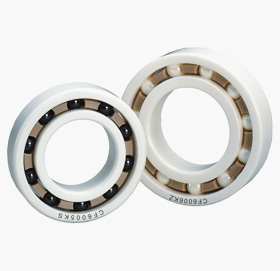
Ceramic bearing, as an important mechanical basic part, is the leader in the world of new materials due to its excellent performance, high temperature resistance and super strength, which cannot be compared with metal bearings. In the past ten years, it has been widely used in various fields of national economy and people's livelihood. First, because ceramics are almost not afraid of corrosion, ceramic rolling bearings are suitable for operation in harsh conditions full of corrosive media. Second, because the density of the ceramic rolling ball is lower than that of steel and the weight is much lighter, the centrifugal effect of the outer ring during rotation can be reduced by 40%, thereby greatly extending the service life. Third, ceramics are less affected by thermal expansion and contraction than steel, so when the bearing clearance is constant, the bearing can be allowed to work in an environment where the temperature difference changes more drastically. Fourth, because the elastic modulus of ceramics is higher than that of steel, it is not easy to deform when subjected to force, so it is beneficial to improve the working speed and achieve higher precision. Ceramic bearings have the characteristics of high temperature resistance, cold resistance, wear resistance, corrosion resistance, anti-magnetic and electrical insulation, oil-free self-lubrication, and high speed. It can be used in extremely harsh environments and special working conditions, and can be widely used in aviation, aerospace, navigation, petroleum, chemical, automotive, electronic equipment, metallurgy, electric power, textiles, pumps, medical equipment, scientific research and defense and military fields. High-tech products for new material applications. The rings and rolling elements of ceramic bearings are made of all-ceramic materials, including zirconia (ZrO2), silicon nitride (Si3N4), and silicon carbide (Sic). The retainer is made of polytetrafluoroethylene, nylon 66, polyetherimide, zirconia, silicon nitride, stainless steel or special aviation aluminum, thereby expanding the application surface of ceramic bearings.
Copyright © 2022 Sidu International Trading (Shanghai) Co., Ltd